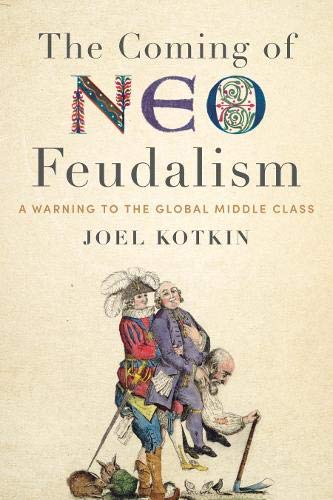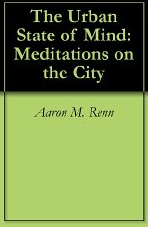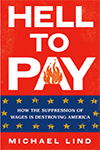The first Census results for Indiana were recently released, painting a picture of an increasingly metropolitan state. Indianapolis continues to be the growth champion as its strong economy attracted people from the rest of the state, as well as increasingly diverse populations. Although the core of Indianapolis fell well below expectations, its population did not fall like that of Chicago. In a switch from some other regions, the outer suburbs also lagged expectations while inner suburbs boasted a robust performance. read more »
Urban Issues
The Still Elusive "Return to the City"
Metropolitan area results are beginning to trickle in from the 2010 census. They reveal that, at least for the major metropolitan areas so far, there is little evidence to support the often repeated claim by think tanks and the media that people are moving from suburbs to the historical core municipalities. This was effectively brought to light in a detailed analysis of Chicago metropolitan area results by New Geography’s Aaron Renn. read more »
Dallas Charges Up for the Electric Chevy
If they build it, will we come? Planners, utilities, auto industry execs, and retailers are hopeful that we will, as they get themselves ready for electric vehicles in the Dallas/Fort Worth Metroplex. This isn’t a pie-in-the-sky vision for the future. The reality is unfolding right now. In 2011, NRG Energy will install upwards of 70 car-charging stations across Dallas and Forth Worth. As the Nissan Leaf and the Chevy Volt begin to penetrate the D/FW market, NRG aims to capture the revenue stream from charging car batteries here, just it is doing in Houston. NRG’s news comes on the heels of electric utility TXU Energy's announcement of its own installation of twelve public charging stations being allocated across Dallas and Fort Worth. read more »
Britain's Housing Crisis: Causes and Solutions
British house construction has remained at a low level for a decade. Total new house and flat completions for all tenures last year were 113,670 for England, 17,470 for Scotland, and 6,170 for Wales. Excluding Northern Ireland that is 137,310 for Britain. Under 140,000 homes a year is low for a nation of 60 million.
We are nearly at the lowest level of housing production since reliable records began in the 1920s. (Note 1) read more »
Obama’s High-Speed Rail Obsession
Perhaps nothing so illustrates President Obama’s occasional disconnect with reality than his fervent advocacy of high-speed rail. Amid mounting pressure for budget cuts that affect existing programs, including those for the inner city, the president has made his $53 billion proposal to create a national high-speed rail network as among his top priorities. read more »
The Evolving Urban Form: Seoul
Based upon the preliminary results of the South Korea 2010 census, Seoul has become the world's third largest metropolitan area. The jurisdictions making out the metropolitan area, the provincial level municipality of Seoul (which is the national capital), the province of Gyeonggi and the provincial level municipality of Incheon now have a population of approximately 23.6 million people. This is third only to Tokyo – Yokohama, which has a population of approximately 40 million and Jabotabek (Jakarta), which is approaching 30 million. read more »
Chicago Takes a Census Shellacking
The Census results are out for Illinois, and it's bad news for the city of Chicago, whose population plunged by over 200,000 people to 2,695,598, its lowest population since before 1920. This fell far short of what would have been predicted given the 2009 estimate of 2,851,268. It's a huge negative surprise of over 150,000, though perhaps one that should have been anticipated given the unexpectedly weak numbers for the state as a whole that were released in December. read more »
A Leg Up: World's Largest Cities No Longer Homes of Upward Mobility
Throughout much of history, cities have served as incubators for upward mobility. A great city, wrote René Descartes in the 17th century, was “an inventory of the possible,” a place where people could lift their families out of poverty and create new futures. In his time, Amsterdam was that city, not just for ambitious Dutch peasants and artisans but for people from all over Europe. Today, many of the world’s largest cities, in both the developed and the developing world, are failing to serve this aspirational function. read more »
China Housing Market More Stable Than You May Think
The sensationalist reporting of rising China tends to celebrate the country’s ascent. But there is one area where both economists and casual observers see a potential disaster: the real estate market. Media reports of skyrocketing housing prices in first tier cities like Beijing and Shanghai and photo essays of Chinese ‘ghost cities’ inject sober skepticism into the otherwise bewildering reality of rapid growth. read more »
Regional Efficiency: The Swiss Model?
Given that no one likes Switzerland’s banks, coo-coo clocks, high prices, smugness, dull cities, cheesy foods, or yodeling, I realize that it is too early to speak politically about “the Swiss Model.” But it needs to be pointed out that while the European Union evaporates and Homeland America goes for broke, the world’s second oldest democracy (1291) has trade and budget surpluses, a multi-lingual population, a green network of trains and buses to every village, excellent public schools, and a federal-style government that is closer to Thomas Jefferson’s America than the bureaucrati read more »






















